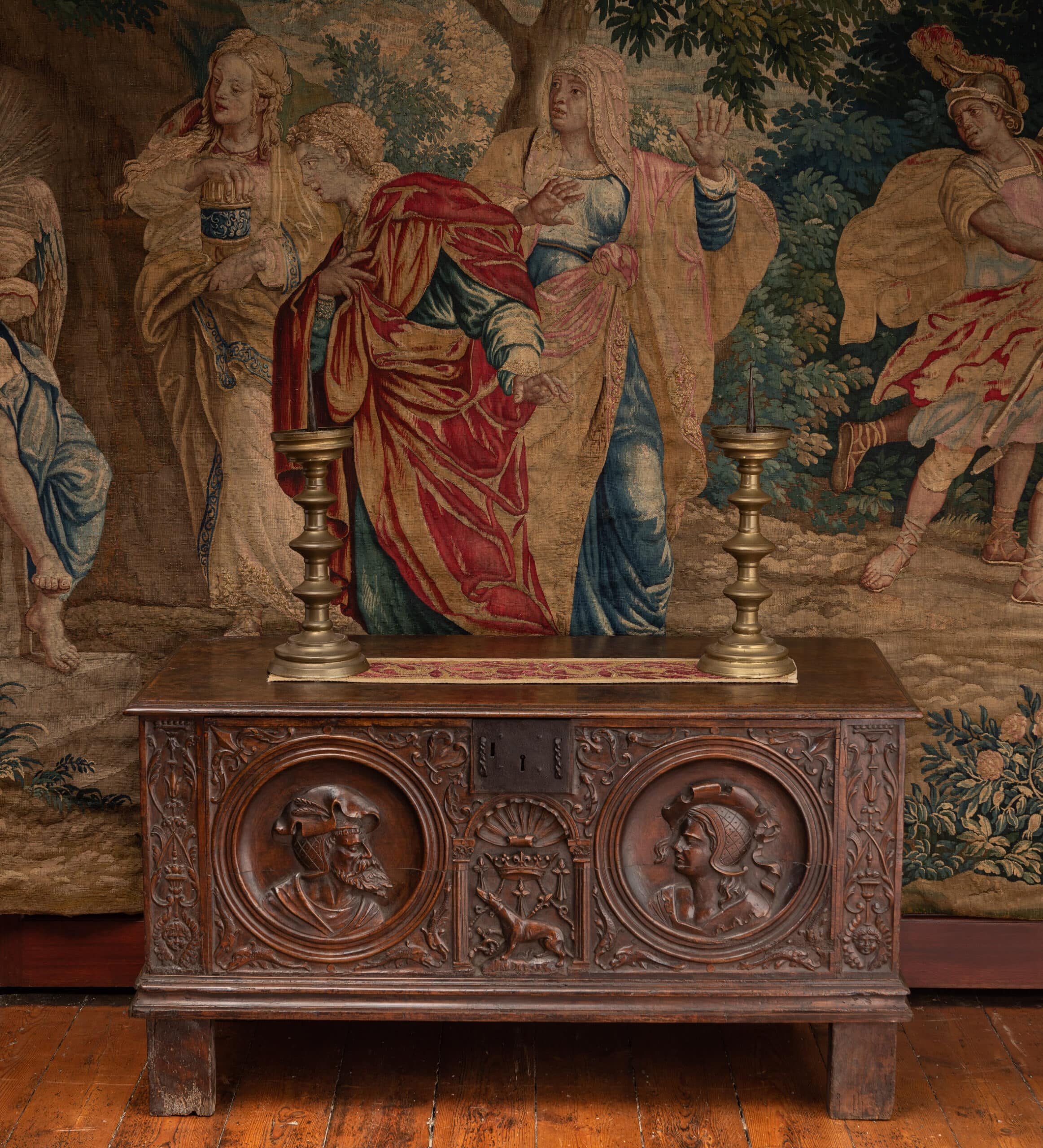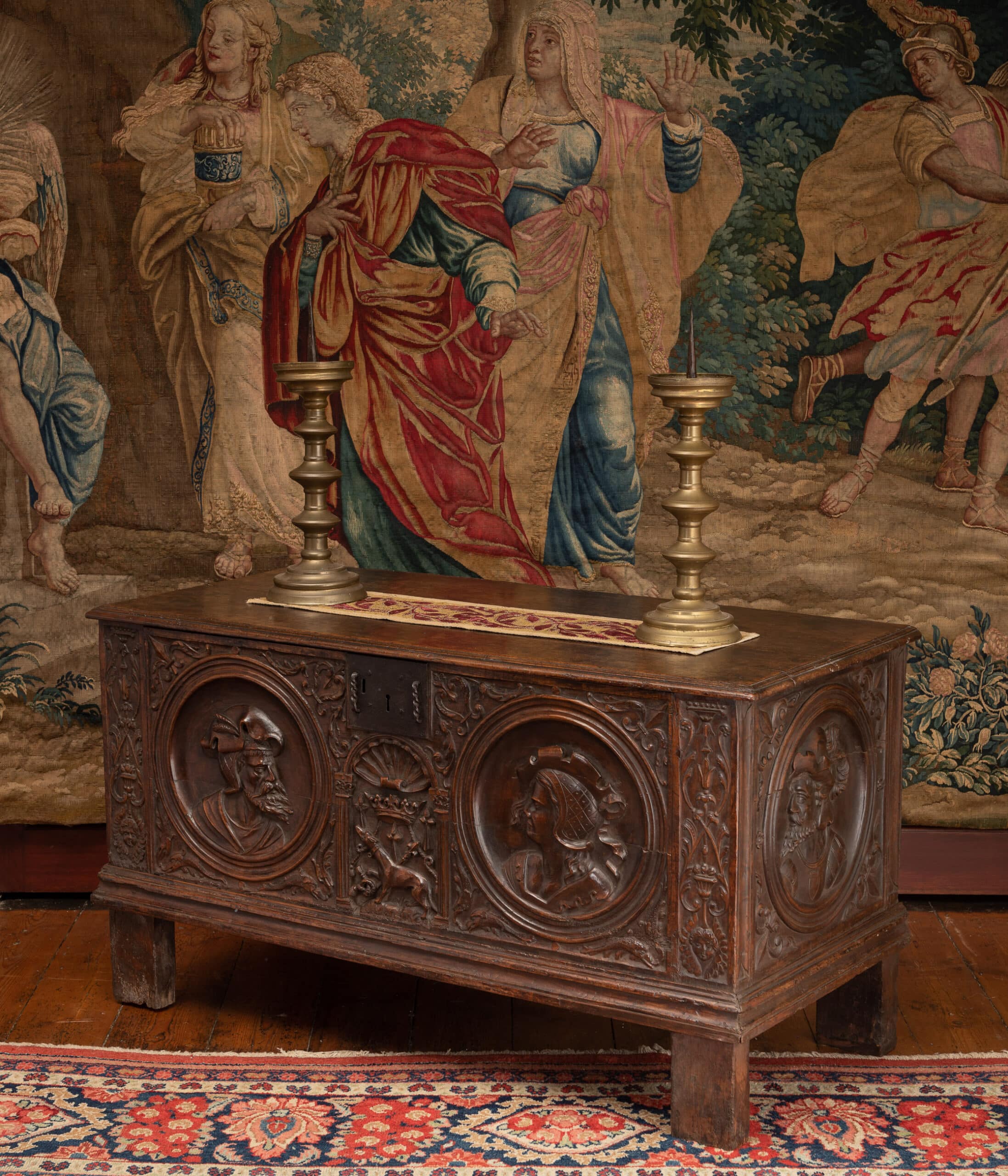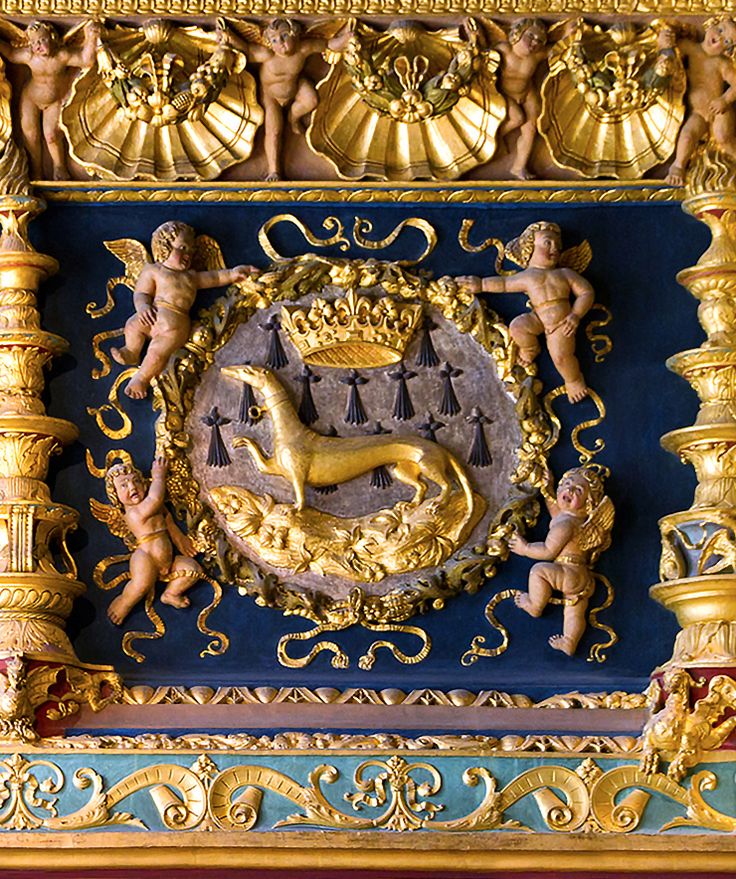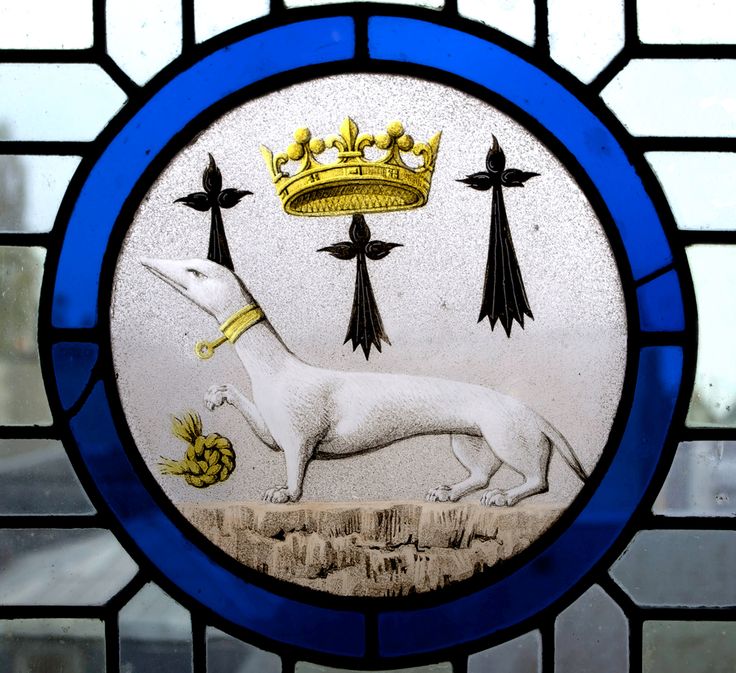Royal walnut chest, Queen Claude of France
Circa 1514 - 1520
Loire Valley, France
W 51 1/2" × H 28 1/2" × D 24 1/4"
Stock # Marh2966
SOLD
Important 16th century French Renaissance carved walnut chest of high quality. The front carved with renaissance ornament with two huge roundels depicting Kind Francois I and Queen Claude, the central coat of arms depicting an ermine and crown are the personal arms of Queen Claude. Each side carved with portraits of warriors. The last two images shown here are the coats of arms of Queen Claude and both are located in the Chateau de Blois in the Loire Valley, France.
Claude of France (13 October 1499 – 20 July 1524) was the ruling Duchess of Brittany from 1514 until her death in 1524 and Queen of France by marriage to King Francis I, which was also in 1514, shortly before he became king on the death of her father. She was a daughter of King Louis XII of France and his second wife, the duchess regnant Anne of Brittany.
On 9 January 1514, when her mother died, Claude became Duchess of Brittany; and four months later, on 18 May, at the age of 14, she married her cousin Francis at Saint-Germain-en-Laye. With this union, it was secured that Brittany would remain united to the French crown, unless the third marriage of Louis XII with Mary of England (celebrated on 9 October 1514) produced the long-waited heir. However, the third marriage of Louis XII was short-lived and childless: Louis XII died on 1 January 1515, less than three months after the wedding, reputedly worn out by his exertions in the bedchamber. Francis and Claude became king and queen, the third time in history that the Duchess of Brittany became Queen of France.
As Queen, Claude was eclipsed at court by her mother-in-law, Louise of Savoy, and her sister-in-law, the literary Navarrese queen Margaret of Angoulême. She never ruled over Brittany; in 1515 she gave the government of her domains to her husband in perpetuity. Unlike her younger sister Renée, she seems to have never showed any interest in her maternal inheritance nor had any disposition to politics, as she preferred to devote herself to religion under the influence, according to some sources, of Christopher Numar of Forlì, who was the confessor of her mother-in-law. Gabriel Miron repeated his functions under Anne of Brittany and remained as Chancellor of Queen Claude and first doctor; he wrote a book entitled de Regimine infantium tractatus tres.
After Francis became king in 1515, Anne Boleyn stayed as a member of Claude's household. It is assumed that Anne served as Claude's interpreter whenever there were English visitors, such as in 1520, at the Field of Cloth of Gold. Anne Boleyn returned to England in late 1521, where she eventually became Queen of England as the second wife of Henry VIII. Diane de Poitiers, another of Claude's ladies, was a principal inspiration of the School of Fontainebleau of the French Renaissance, and became the lifelong mistress of Claude's son, Henry II.
It is highly probable that this chest was made for Queen Claude and was at Chateau de Blois.



